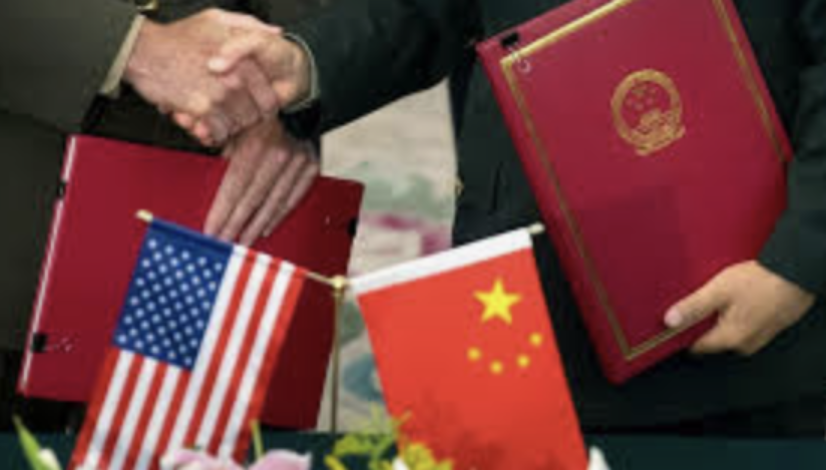The trade deal failed because Beijing hasn’t earned our trust

There are five things everyone should know about our trade war with China:
1. President Trump and his advisors will not back down. China’s expectation that the White House would give ground on issues already decided was profoundly mistaken.
Their hope that Trump would prioritize his political desire for a buoyant stock market and booming economy over re-engineering our trade relationship with China was an error.
2. China’s senior official in the talks, Vice Premier Liu He, suggested that the changes his team demanded in terms already agreed to were “very natural.”
He further said that the issues at stake were “matters of principle” that were unacceptable to Beijing. So, not outlawing intellectual property theft, apparently, is a “matter of principle” for the Chinese.
3. China wants the U.S. to trust they will abide by any agreement struck between the two sides. That the arrangement should be codified through legislation was apparently viewed as awkward politically for Chinese President Xi Jinping.
Here’s the problem: We do not and should not trust Beijing. We should not, in particular, trust President Xi, who openly lied to President Obamaabout, for instance, his country’s activities and intentions in the South China Sea.
4. The Chinese have retaliated in kind to the increase from 10 percent to 25 percent in tariffs placed on their exports coming into the U.S. They boosted duties on $60 billion of U.S. exports from 5 percent and 10 percent to 20 percent and 25 percent, respectively.
However, the impact on the U.S. will be far less than the hit to China, especially if President Trump follows through on the threat of hikes on an additional $300 billion of Chinese exports. Exports account for roughly 20 percent of China’s economy compared to only 12 percent of U.S. GDP.
That comparison, though, understates the disparate impact. In 2018, the U.S. exported $120 billion in goods to China; their goods exports to the U.S. totaled $540 billion.
So far, Chinese firms have swallowed most of the prior round of tariffs; they likely cannot absorb the latest increase, but chances are the higher charges will be muted.
5. The U.S.-China trade relationship has been skewed to our disadvantage for years. Their tariffs on U.S. goods (10 percent) have historically run more than twice the level imposed by the U.S. (4 percent).
They have abused their status under World Trade Organization rules as a developing country, and they have long relied on the forced transfer of technology and stolen intellectual property to enable their development.
These practices have all disadvantaged the U.S. but were ignored for decades by U.S. leaders in thrall to the Chamber of Commerce and other big-business groups. These are the behaviors that Trump is trying to change, and the entire world should applaud.
These five points are at the heart of the trade dispute and underlie the shakiness in the markets today. China’s intransigence may reflect their calculus that President Trump will not win reelection in 2020 and that his successor will be more easily managed.
Beijing can in fact influence that outcome by refusing to return to the bargaining table. A stalemate would dampen global growth, sapping enthusiasm for the Trump presidency.
But China might be surprised to find that most Americans agree with President Trump and are pleased his team is confronting China.
According to Gallup, 57 percent of the country has an unfavorable view of China, a negative reading only surpassed once in the past 40 years. That survey also revealed that a startling 89 percent of Americans see China posing a “critical” or “important” economic threat to the United States.
China is also vulnerable. While President Trump would doubtless be wounded by a trade war and slumping economy, President Xi’s leadership could also be challenged by a downturn similar to what China experienced last year.
Growth in the first quarter there was 6.4 percent, the weakest reading since the first three months of 2016 and substantially less than the 9.52 percent it averaged from 1989 to 2019. For all of 2018, the economy expanded at 6.6 percent, the slowest rate since 1990.
While the U.S. and other developed countries would applaud growth at that level, China resorted to traditional methods to boost its expansion, relying especially on government-funded investment.
In their March meeting, officials announced their plans for stimulating growth, which included cutting taxes and fees, encouraging lending to small firms and implementing some reforms in state-owned enterprises.
Other features of the plan included raising consumer spending; more than three quarters of last year’s growth came from the consumer.
Just like in the U.S., a fall-off in consumer sentiment stemming from the trade battle could undermine such hopes. The stock market is off 11 percent from the high reached earlier this year, trading lower as tariffs rise, which doesn’t help.
Chinese officials are also looking to greater foreign investment in industries including agriculture, mining and manufacturing. The committee charged with economic planning included a promise to treat foreign firms more equitably, which of course lies at the heart of the trade dispute.
In other words, central planners in China want more consumer spending and more money coming into their country from overseas. Both of those things will require returning to trade negotiations armed with concessions that will protect foreign firms. Promises won’t cut it because nobody can trust Chinese officials.
Published on The Hill




